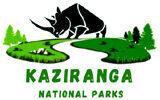Historical Tapestry of Sohra
Nestled in the captivating East Khasi Hills district of Meghalaya, Sohra stands as a testament to the rich history of the Khasi tribe. Originally ruled by the Syiems (chieftains) of Khyriem in the 16th century, Sohra has witnessed the footprints of British rulers in the early 18th century, marking the town as the first British foothold in Northeast India.
Cherrapunji to Sohra: A Linguistic Evolution
As the British settled, the town earned the moniker "Chur(r)ra" or "Cherra" due to linguistic nuances. Over time, the name evolved to Cherrapunji ('land of oranges') when the term 'punjee' was appended, signifying a cluster of villages in the region. Recently, the state government, respecting local traditions, reverted to the original name, Sohra.
Cultural Heritage and Missionary Roots
Sohra holds cultural significance as the birthplace of the Khasi Alphabets, courtesy of Reverend Thomas Jones, the first British Christian missionary. With the establishment of the first Presbyterian Church in the Khasi-Jaintia Hills, Sohra became a cornerstone of Khasi literature and Christian faith.
David Scott's Legacy
The town also pays homage to David Scott, a British Administrator whose legacy is enshrined in an obelisk-shaped memorial. Known for discovering the David Scott Trail, a historic horse-cart track, Scott played a pivotal role in the conflict between the Khasis and the British.
Nature's Bounty in Sohra
Beyond its historical allure, Sohra captivates visitors with its natural wonders, earning acclaim as a must-visit destination in Meghalaya.
Key Attractions in Sohra
Living Root Bridge: Trek through the lush landscapes to marvel at the Double-Decker Living Root Bridge in Nongriat village, a testament to nature's ingenuity.
Waterfalls: Sohra is adorned with iconic waterfalls, each narrating its own legend. Notable ones include Nohkalikai Falls, Kynrem Falls, Dainthlen Falls, and Nohsngithiang Falls.
Limestone Caves: Explore the intricate cave systems, with Mawsmai Caves and Arwah Caves beckoning adventurers. For the daring, Krem Mawmluh offers an immersive experience with expert guides.
Practical Information for the Sohra Sojourn
Getting There: A scenic 45 km drive from Shillong unveils Sohra's mist-covered valleys and enchanting rain-washed landscapes.
Best Time to Visit: October to May offers pleasant weather, ideal for trekking and cave exploration. For the full splendor of waterfalls, July to September is recommended.
Duration of Visit: A day trip suffices for sightseeing, but immersing in nature and local culture warrants a minimum of 2 days.
Where to Eat: Indulge in Khasi cuisine at local eateries or savor familiar Indian and Chinese dishes in hotels and resorts. Vegetarians can relish pure vegetarian options at Orange Roots.
Where to Stay: From guest houses to resorts, Sohra provides diverse accommodation options. Jiva Resort and Polo Orchid Resort are popular choices, organizing tailored tours and culinary experiences.
Tips for the Sohra Adventure
Weather Preparedness: Sohra's weather is unpredictable; carry an umbrella, a jacket, and be ready for sudden changes.
Homestay Experience: Immerse in local culture with a homestay, especially in Nongriat.
Local Delights: Visit the Sohra market for Khasi Mandarin, Sohra oranges, and Orange-flavored honey.
Souvenir Shopping: Explore bamboo handicrafts and handlooms at tourist points for unique souvenirs.
Embark on a journey to Sohra, where history, nature, and culture converge to create an enchanting tapestry in the heart of Meghalaya.







